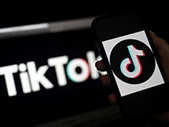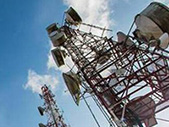|
|
Airtel gradually reducing dependency on Huawei 4G; set to replace it with Ericsson
 Bharti Airtel is likely to replace Huawei with Sweden’s Ericsson for 4G network expansion and modernisation in the Rest of Tamil Nadu (RoTN) circle, people familiar with the matter said, as the Sunil Mittal-led telco takes gradual steps towards reducing dependency on the Chinese telecom gear maker.
Bharti Airtel is likely to replace Huawei with Sweden’s Ericsson for 4G network expansion and modernisation in the Rest of Tamil Nadu (RoTN) circle, people familiar with the matter said, as the Sunil Mittal-led telco takes gradual steps towards reducing dependency on the Chinese telecom gear maker.
Bharti Airtel is likely to replace Huawei with Sweden’s Ericsson for 4G network expansion and modernisation in the Rest of Tamil Nadu (RoTN) circle, people familiar with the matter said, as the Sunil Mittal-led telco takes gradual steps towards reducing dependency on the Chinese telecom gear maker.
“Without Rest of Tamil Nadu, Huawei will just have two Airtel circles. Airtel has already stopped giving packet core orders to Huawei for any capacity expansion,” a person said on condition of anonymity. “All such orders have gone to Ericsson.”
Ericsson, which is the second-largest vendor for Airtel, declined to comment. Queries sent to Huawei remained unanswered.
"Airtel has strong relationships with several partners. These partners work across all our domains, radio, core and transport,” an Airtel spokesperson said in a statement to ET.
Huawei had increased its involvement with the Airtel network in 2017 when it got Rajasthan and UP (West) on top of Karnataka and Rest of Tamil Nadu.
But it is now likely to be back to two, with the telecom major, with over 284 million users, in late 2019 having swapped Huawei’s gear with Ericsson’s in the Rajasthan circle. That came at a time when the pressure on Huawei was increasing, mainly from the US, for its alleged proximity to the Chinese government, leading to concerns over possible snooping.
And now, India too has made its security concerns around Huawei clear, especially in the wake of the heightened border tensions with China. New Delhi has already barred state-run carriers from sourcing equipment from Chinese companies Huawei and ZTE, and is believed to have informally nudged private telcos to replace Chinese equipment over time, without disrupting consumer services. Besides the US, even the UK recently banned the purchase of Huawei 5G equipment and said any such gear that’s installed needs to be removed by 2027.
Randeep Sekhon, chief technology officer at Bharti Airtel, previously told ET that alternative suppliers were available if needed. “We will be fully compliant with government orders… To be fair, there are enough suppliers in the world and new suppliers are coming in. India should be fine with it.”
The comments had come soon after the US tightened restrictions on the Chinese vendor, which meant that Taiwanese Semiconductor Manufacturing Co (TSMC), the world’s largest contract semiconductor maker, had to stop taking new orders from Huawei. This is expected to affect Huawei’s supplies globally, including to Indian vendors. (Source:ETTelecom)
|
Anritsu Extended 116-Gbit/s PAM4 Error Detector Functions Take World Lead in Evaluations for 400-GbE and 800-GbE Transmissions
 With the release of the FEC symbol capture function and Bathtub test capability for Anritsu's 116-Gbit/s PAM4 Error Detector (ED) MU196040B installed in its flagship Signal Quality Analyzer-R MP1900A series, Anritsu (President Hirokazu Hamada) is pleased to announce strengthened support for development of devices for 400-GbE*1 and 800-GbE*2 transmissions. These functions are supported by downloading and installing the latest control software from the MP1900A website - https://www.anritsu.com/test-measurement/products/mp1900a.
With the release of the FEC symbol capture function and Bathtub test capability for Anritsu's 116-Gbit/s PAM4 Error Detector (ED) MU196040B installed in its flagship Signal Quality Analyzer-R MP1900A series, Anritsu (President Hirokazu Hamada) is pleased to announce strengthened support for development of devices for 400-GbE*1 and 800-GbE*2 transmissions. These functions are supported by downloading and installing the latest control software from the MP1900A website - https://www.anritsu.com/test-measurement/products/mp1900a.
[Background]
The spread of commercial next-generation 5G mobile communications services enables faster sending and receiving of large video and data files. To support larger and faster transmissions, data centers, which are key infrastructure in 5G mobile networks, are also investigating speed upgrades from the current 100 GbE*3 to 400 GbE and future 800 GbE/1.6 TbE standards.
PAM4*4 used in 400 GbE is easily affected by noise and transmission path losses, making it difficult to achieve the previous level of error-free transmissions and requiring use of FEC (Forward Error Correction*5) to correct generated errors and maintain transmission quality.
Consequently, there is increasing need for quantitative measurement of jitter-related signal quality, such as jitter tolerance*6 measurement for evaluating the performance of high-speed devices and transceivers for 400-GbE.
[Outline of Developed Product]
To meet this need and support 400G network evolution, Anritsu has added two new features to its MP1900A: the FEC symbol capture function to evaluate FEC-based network elements, and the PAM4 Bathtub*7 test capability.
In today’s high-speed networks, some low-probability errors are expected in data traffic and these errors are corrected using FEC. The new MP1900A ED functions analyze the types of errors to evaluate whether or not the errors can be corrected by FEC and starts capturing data streams only when the burst errors exceed the FEC uncorrectable threshold. From the captured data, a user can determine and troubleshoot what kind of data steam caused the uncorrectable burst errors.
Since the impact of jitter becomes severe as the data-stream baud rate is increased to achieve a higher traffic capacity, Anritsu has added the PAM4 Bathtub test capability to evaluate and quantify the jitter phase margin.
The modular MP1900A running embedded Windows 10 has good expandability. As well as supporting 400-GbE and 800-GbE PAM4, it is a market-leading bit error rate tester (BERT) for various high-speed interfaces, including PCI Express Gen5 and USB4, using a full line of modules and application software. In addition to more accurate BER measurements, the MP1900A helps shorten development times for high-speed devices and transceivers.
[About MP1900A PAM4 BERT Solution]
https://www.anritsu.com/en-IN/test-measurement/solutions/hs-pam4-ber/index
[About leaflet on FEC symbol capture function]
https://www.anritsu.com/en-IN/test-measurement/support/downloads/brochures-datasheets-and-catalogs/dwl20151
[Target Markets and Applications]
■ Target Markets: 400-GbE and 800-GbE communications equipment and device makers
■ Applications: Bit error rate evaluation of 400-GbE and 800-GbE communications equipment and devices
[Terms]
*1, *2, *3 400 GbE, 800 GbE, 100 GbE
Communications standards studied and defined by IEEE
*4 PAM4
PAM (Pulse Amplitude Modulation) is a transmission method controlled by changing the voltage amplitude (pulse height). PAM4 transfers 2 bits of data using 4 levels in one time slot.
*5 Forward Error Correction
One receiver-side method of correcting errors in transmitted data generated by transmission path
*6 Jitter Tolerance
Ability to receive signals including jitter in input signal at receiver side
*7 Bathtub
Method of analyzing jitter by separating jitter components included in input signal from changing properties of error rate on time axis (Source: Convergence Plus)
|
Tiktok Considers London And Other Locations For Headquarters To Distance Itself From Its Chinese Ownership
 TikTok has been in discussions with the UK government over the past few months to locate its headquarters in London, a source familiar with the matter said, as part of a strategy to distance itself from its Chinese ownership.
TikTok has been in discussions with the UK government over the past few months to locate its headquarters in London, a source familiar with the matter said, as part of a strategy to distance itself from its Chinese ownership.
London is among one of several locations the company is considering, but no decisions have been made, the source said.
It was not immediately clear what other locations are under consideration. But it has hired aggressively in California this year, including poaching Kevin Mayer, a former Walt Disney Co executive, to be TikTok’s chief executive. He is based in the United States.
TikTok is facing heavy scrutiny in Washington over suspicions China could force the company to turn over user data. TikTok is owned by China-based ByteDance.
The source said the company is largely focused on its issues in the United States over the last few weeks, but has not ruled out London as a potential location for its new headquarters. TikTok is expected to "significantly" increase the size of its workforce in London and other key locations outside of China over the next several years, the source said.
The Sunday Times reported https://bit.ly/2ZHlI1Z Tiktok has broken off talks with the UK government to open a global headquarters in Britain.
A source said Tiktok was still in discussions with Britain's government.
TikTok declined to comment. (Source: Economic Times)
|
Twitter Says Up To 8 Accounts May Have Had Private Messages Stolen
 Twitter has revealed that hackers may indeed have downloaded the private direct messages of up to eight individuals while conducting their Bitcoin scam, and were able to see "personal information" including phone numbers and email addresses from each account, in one of the biggest security lapses in the company's history this week. Twitter has revealed that hackers may indeed have downloaded the private direct messages of up to eight individuals while conducting their Bitcoin scam, and were able to see "personal information" including phone numbers and email addresses from each account, in one of the biggest security lapses in the company's history this week.
The social media giant, on late Friday night (local time), said in a blog post that hackers had downloaded the data using a tool that includes an archive of private messages. As per CNN reports, the company said these eight accounts were not verified accounts.
The staggering hack compromised accounts belonging to VIPs ranging from former President Barack Obama and presumptive Democratic presidential nominee Joe Biden to billionaire businessmen Elon Musk and Jeff Bezos.
Twitter said 130 accounts had been targetted by the attackers. Of those, 45 accounts were successfully breached.
The company also said that several of its employees had been targeted by hackers to gain access to internal systems.
"The attackers successfully manipulated a small number of employees and used their credentials to access Twitter's internal systems, including getting through our two-factor protections. As of now, we know that they accessed tools only available to our internal support teams," the company said.
Members of US Congress, cybersecurity experts and Twitter itself have been searching for answers about how the hack happened.
Images circulating online purporting to show a screenshot of an internal Twitter control system connected to the hack are being looked at by federal investigators, law enforcement sources informed CNN.
The tool appeared to include the ability to change the email address associated with a Twitter account, which could potentially allow a Twitter account to be taken over.
Twitter has removed tweets with the images from its platform, according to people who have posted them. A Twitter spokesperson told CNN Friday it was removing images that included personal or private information.
The company has been in touch with the Federal Bureau of Investigation (FBI), the spokesperson added. (Source: Economic Times)
|
Telcos Unite To Block Trai Proposals To Curb International Roaming Bill Shock
 Say telecom operators must be left to decide how they want to provide better services. In a rare show of unity, telecom operators including Airtel, Vodafone Idea and Reliance Jio have opposed a move by the telecom regulator to bring in more measures to reduce bill shock while travelling overseas. Say telecom operators must be left to decide how they want to provide better services. In a rare show of unity, telecom operators including Airtel, Vodafone Idea and Reliance Jio have opposed a move by the telecom regulator to bring in more measures to reduce bill shock while travelling overseas.
For the past many years, mobile users have been complaining about receiving higher-than-expected bills on international roaming services. Most of these complaints are primarily due to lack of awareness on the part of users. While mobile operators have introduced a number of measures to make users more aware of the tariffs and roaming data plans available, the Telecom Regulatory Authority of India had proposed additional measures to bring more transparency.
But mobile operators reckon that they do not need regulatory intervention in this matter. “The Authority should refrain from venturing into the construct of the IMR packs as this would be tantamount to interfering with the freedom to innovate and would be averse to ease of doing business tenets,” Reliance Jio said in its response to a consultation paper floated by TRAI.
Equal interest
“While we appreciate the Authority’s concern on bill-shock related issues, we submit that the operators are equally concerned about the same and have equal or even more interest in keeping the high value international mobile roaming (IMR) customers happy and satisfied,”Jio added.
One of the suggestions made by TRAI is to prohibit operators from activating roaming services by default on every connection. Opposing this, Airtel said that there is no need to ban activation of roaming services on pre-paid connections.
“In the case of prepaid, the customer pre-pays the amount he/ she wishes to spend on telecom services. Every service, such as voice/ data/ SMS has a different rate for unit usage. The balance gets deducted on the basis of the actual usage incurred. The customer is immediately aware of the usage as well as the charges. Hence, all the services, including IMR services, are activated at the time of issuance of SIM,” Airtel said in its response to the consultation paper.
Airtel added that the majority of measures, proposed by TRAI, are already a part of the existing processes being followed by the operator and no additional regulatory intervention is required. “Any hard coding of the compliances in this regard may limit the operators’ ability to further improve upon the processes/ customer experience and should not be attempted if present measures are working efficiently,” it said.
Vodafone Idea added that it should be left to telecom operators to decide how they want to provide better services to customers. “We submit that regulatory mandate is not required. TRAI should consider any regulation if other measures have been given sufficient time to conclude that there is a persistent problem. There is no evidence given in the consultation paper that there is a persistent problem due to Indian telecom operators,” Vodafone Idea said.
Consumer groups back TRAI
Consumer groups have, however, backed the TRAI move. For example, the regulator has proposed to impose a cap on the bill. “Capping the amount that can be charged to the consumer in any situation, to the amount of the credit limit fixed by the telecom service providers for the subscriber or any other limit pre-agreed by the consumer at the time of activation of the IMR service, will go a long way in protecting the interest of the consumers,” said Bharat Jyoti Consumer Advocacy Group. (Source: The Hindu Businessline)
|
PLI scheme: Centre’s hard stance has put Chinese handset makers like Xiaomi, Oppo, Vivo in dilemma
 For global players, incentives would be for phones above $200 as they have a market outside India. In India, phones above $200 have a market share of only 2%. Due to this, the domestic value addition for mobile phones is expected to rise to 35-40% by 2025 from the current level of 2-25%. For global players, incentives would be for phones above $200 as they have a market outside India. In India, phones above $200 have a market share of only 2%. Due to this, the domestic value addition for mobile phones is expected to rise to 35-40% by 2025 from the current level of 2-25%.
Due to this, the domestic value addition for mobile phones is expected to rise to 35-40% by 2025 from the current level of 2-25%.
The border stand-off with China and the government’s hard stance towards Chinese companies operating in the domestic space, has put Chinese handset makers like Xiaomi, Oppo, Vivo, Realme, etc, in a quandary with regard to applying for the Rs 41,000-crore production-linked incentive scheme.
Government officials, however, told FE that since the scheme is for export market, hurdles would not be put in the path of Chinese players and if they apply their case would be considered on merits.
The scheme, under which the government will offer incentives to selected firms, is basically aimed to attract global electronics firms to set up manufacturing bases in the country for export purposes. So far, Foxconn and Wistron, the global contract manufacturers for Apple, have registered for the scheme, while among the local players, Lava, Dixon Technologies, and Karbonn have done the same. However, none of the Chinese mobile makers present in the country have so far registered for the scheme and are still reported to be weighing their options.
The government started inviting applications under the scheme beginning this month and the last date for applying is month-end. By early August, the names of selected companies will be announced. Initially, five global and five local companies will be selected to avail of the scheme. South Korean major Samsung and Flextronics are also expected to submit their applications shortly.
The reason the government is likely to consider the applications of Chinese firms favourably in case they apply is because the potential of job creation as a result of the PLI scheme is 15 lakh over a five-year period. Around 90% of the jobs would be at the worker level where an average salary level would be around Rs 22,000. The remaining 10% jobs would be of supervisor levels.
For global players, incentives would be for phones above $200 as they have a market outside India. In India, phones above $200 have a market share of only 2%.
Companies will require to meet incremental investments and produce incremental phones over and above FY20 (which has been defined as the base year). Investment and production targets increase over a three-year period and five-year period, respectively.
The PLI scheme will extend an incentive of 4% to 6% on incremental sales over base year of goods manufactured in India and covered under target segments, to eligible companies, for a period of five years subsequent to the base year as defined. Due to this, the domestic value addition for mobile phones is expected to rise to 35-40% by 2025 from the current level of 2-25%.
According to industry estimates, mobile manufacturing companies have the potential to get an incentive of around Rs 7,500 crore if they scale up production to worth about Rs 1.5 lakh crore over the next five years under the PLI scheme.
The production of mobile mobile handsets in 2018-19 reached 29 crore units worth Rs 1.70 lakh crore from 6 crore units worth Rs 19,000 crore in 2014. While the exports of electronics has increased from Rs 38,263 crore in 2014-15 to `61,908 crore in 2018-19, India’s share in global electronics production has reached 3% in 2018 from 1.3% in 2012. (Source: Financial Express)
|
 Bharti Airtel is likely to replace Huawei with Sweden’s Ericsson for 4G network expansion and modernisation in the Rest of Tamil Nadu (RoTN) circle, people familiar with the matter said, as the Sunil Mittal-led telco takes gradual steps towards reducing dependency on the Chinese telecom gear maker.
Bharti Airtel is likely to replace Huawei with Sweden’s Ericsson for 4G network expansion and modernisation in the Rest of Tamil Nadu (RoTN) circle, people familiar with the matter said, as the Sunil Mittal-led telco takes gradual steps towards reducing dependency on the Chinese telecom gear maker.

 With the release of the FEC symbol capture function and Bathtub test capability for Anritsu's 116-Gbit/s PAM4 Error Detector (ED) MU196040B installed in its flagship Signal Quality Analyzer-R MP1900A series, Anritsu (President Hirokazu Hamada) is pleased to announce strengthened support for development of devices for 400-GbE*1 and 800-GbE*2 transmissions. These functions are supported by downloading and installing the latest control software from the MP1900A website - https://www.anritsu.com/test-measurement/products/mp1900a.
With the release of the FEC symbol capture function and Bathtub test capability for Anritsu's 116-Gbit/s PAM4 Error Detector (ED) MU196040B installed in its flagship Signal Quality Analyzer-R MP1900A series, Anritsu (President Hirokazu Hamada) is pleased to announce strengthened support for development of devices for 400-GbE*1 and 800-GbE*2 transmissions. These functions are supported by downloading and installing the latest control software from the MP1900A website - https://www.anritsu.com/test-measurement/products/mp1900a.
 TikTok has been in discussions with the UK government over the past few months to locate its headquarters in London, a source familiar with the matter said, as part of a strategy to distance itself from its Chinese ownership.
TikTok has been in discussions with the UK government over the past few months to locate its headquarters in London, a source familiar with the matter said, as part of a strategy to distance itself from its Chinese ownership.
 Twitter has revealed that hackers may indeed have downloaded the private direct messages of up to eight individuals while conducting their Bitcoin scam, and were able to see "personal information" including phone numbers and email addresses from each account, in one of the biggest security lapses in the company's history this week.
Twitter has revealed that hackers may indeed have downloaded the private direct messages of up to eight individuals while conducting their Bitcoin scam, and were able to see "personal information" including phone numbers and email addresses from each account, in one of the biggest security lapses in the company's history this week.
 Say telecom operators must be left to decide how they want to provide better services. In a rare show of unity, telecom operators including Airtel, Vodafone Idea and Reliance Jio have opposed a move by the telecom regulator to bring in more measures to reduce bill shock while travelling overseas.
Say telecom operators must be left to decide how they want to provide better services. In a rare show of unity, telecom operators including Airtel, Vodafone Idea and Reliance Jio have opposed a move by the telecom regulator to bring in more measures to reduce bill shock while travelling overseas.
 For global players, incentives would be for phones above $200 as they have a market outside India. In India, phones above $200 have a market share of only 2%. Due to this, the domestic value addition for mobile phones is expected to rise to 35-40% by 2025 from the current level of 2-25%.
For global players, incentives would be for phones above $200 as they have a market outside India. In India, phones above $200 have a market share of only 2%. Due to this, the domestic value addition for mobile phones is expected to rise to 35-40% by 2025 from the current level of 2-25%.






